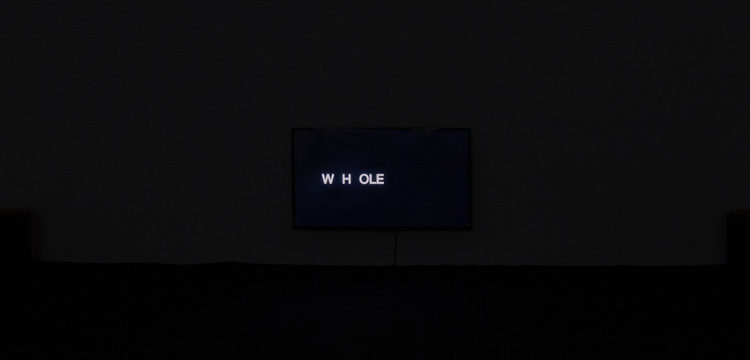We are All Savages
From the Vatican to Freud, a brief history of masturbation and normativity by Self Pleasure Publishing
Reading and writing can be considered acts that enclose in themselves the subversive dimension of personal pleasure. Self Pleasure Publishing at Otto Zoo involved artists, a self-produced editorial platform and the Archivio Luca Locati Luciani, which for years has explored the area of LGBTQI+ sexuality by collecting essays, magazines, “ephemera”, and photographic material. The artworks present in the show SAVAGE have inspired innumerable images which overturn the categories of gender, sex, nationality, and generation we often use to observe others. A show that can be read like a book, but it is also a book that can be read as a show.
“Un atto intrinsecamente e gravemente disordinato”
“An intrinsically and drastically messy act”
These words are used to define masturbation. I found them on the Vatican website. I think they are extremely beautiful. I see beauty connected with disorder as surrender to a total loss of control. In fact, sometimes I consider pleasure as an escape from the rules, as something enjoyable inasmuch is placed outside the rationality. However, since the term “disordered” seems to imply its own counterpart, I think the word “messy” could work better to express the total lack of any reference point. When I use the word “messy” I imagine a room full of Goth posters on the walls, some clothes on the floor, surely some socks composing abstract sculptures, and a big untidy bed.
I am writing in English, so this will be a messy act. I need to get out of my natural order and land in a different one; this journey will surely create some mess. I type the full sentence on Google Translator. Here, I realize that my brain doesn’t work so much differently from an algorithm. Google says: “An intrinsically and gravely messy act.” I substituted “gravely” for “drastically” because this adverb comes from dràma that in Greek means “action.” According to this, “drastically” could be less heavy than “gravely”… but I think the weight of words depends on the parameters used to measure them. If you say to someone “you are a drama queen” you probably don’t wish to say that this person is the “queen of making an action.” In any case an act is an act. People can do it or not. But then as J.L. Austin said you “make things with words” and it is never that simple. I’d like to make a messy act with words… this is what this text is about.
When I was a child, I was part of the very small percentage of unbaptized kids in my school. But this didn’t exonerate me from the fact that when I played with my body in my teen room later on, I was still thinking I could lose some vital energy by simply making this messy act. I had heard I could become blind, but nobody believed in this any longer; so, I thought I could simply become a sort of flabby teen. Even if I knew that I was alone in my room, the words said by somebody else were there with me. Was I really alone? This sounds like the trailer of a horror movie. American horror movies, especially the ones from the 80s, have so many connections with teenagers.
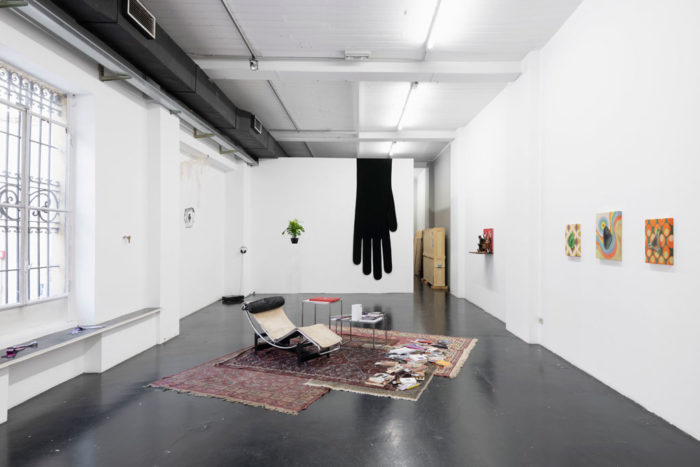
Savage at Otto Zoo, Installation view. Courtesy Otto Zoo. Photo Luca Vianello.
On the Vatican website, the aforementioned definition is expressed as an offense to chastity, related to the Sixth Commandment (“Do not commit adultery”). According to Giovanni Cappelli who wrote Autoerotismo. Un problema morale nei primi Secoli Cristiani (Autoerotism. A moral problem in the early Christian centuries, 1986), in the Bible there is no explicit mention of the solitary act if not in conjunction with other sexual behaviors (such as adultery and contraception). Starting my research from the Bible, I noticed that the male gender has played a primarily role in the choice of terminology for self-sex throughout history. Onan, the man who gave the name to Onanism, was not condemned by God for playing alone, but because he dispersed his semen on the ground. He refused to give a child to his brother’s widow, as instead he was supposed to do according to the levirate law. Onan definitely represented someone who played outside the law, and for this reason he might be considered a “figure of disorder.” His acts were always related to someone else: his brother, his brother’s widow, and obviously God.
In Histoire d’une grande peur, la masturbation (Masturbation: the History of Great Terror, 1998) Jean Stengers and Anne Van Neck scan through many different books coming from Western culture, trying to investigate where the fear of engaging in self-sex is coming from. It is no coincidence that the first book they quote is Le Grand Dictionnaire universel du XIX siècle edited by Pierre Larousse in 1873. Dictionaries are indeed fundamental tools to put words in order and methodologically collect what has been said around the same topic. But, is it actually possible to collect all the words that have been said? This failing act is similar to the idea of ordering disorder… but this is so human, what we normally do is to order things with words, forgetting that we are constantly “acting” with them in a “dramatic” situation.
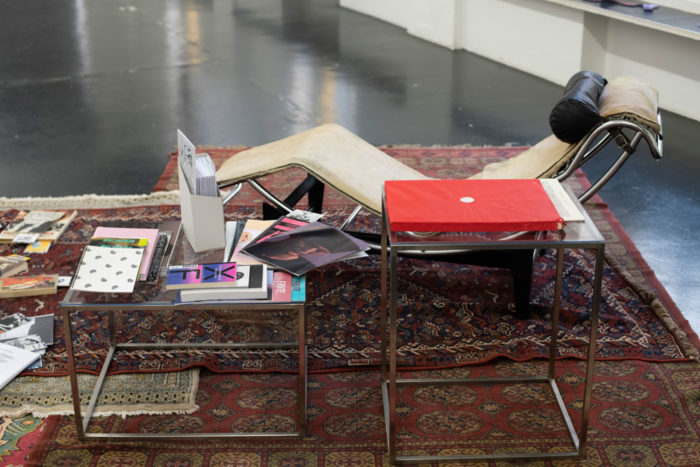
Savage at Otto Zoo, Installation view. Courtesy Otto Zoo. Photo Luca Vianello.
If we deal with disorder through the ordering provided by linguistic methodologies, why are we not so keen on accepting order through the messiness of human acts? Maybe because to be intrinsically in a state of disorder is a condition of decontrol and it might also imply losing ourselves in what could be called the “non-human and a-linguistic.” I like to call this condition “SAVAGE”. The English word comes from the French “sauvage,” itself a derivative of the Latin “silva” meaning “forest”. Yes, let’s get lost in the woods, a dark place where we can only experience through our body, where ordered knowledge leaves space for our instincts. We will find ourselves outside of language… we will be savages.
I borrowed this term from Sigmund Freud… Sorry, that’s not entirely accurate. I took it from an English translation of Totem und Tabu. Einige Übereinstimmungen im Seelenleben der WILDEN und der Neurotiker, so Sigmund probably has nothing to do with the use of this term, and the real responsible is A.A. Brill, the translator of the 2012 edition of the book. In the subtitle of the book Brill translated the term “Wilden” as “Savages”: “Resemblances Between the Psychic Lives of Savages and Neurotics.” I don’t speak German and I am writing in English (not my native language) quoting a translation that I can’t check. However, I am trying to understand what “savages” could mean, suspecting that Brill wanted to affirm that Sigmund was comparing people mentally living outside the rules of his society with people who are organized in a different kind of society, geographically far from him. Indeed, Freud was speaking about people outside something, but the most interesting thing for me is that in order to measure the distance between himself and the other, he was bound to refer to his own context. Likely many other characters appearing in this text, Freud referred to himself and his environment as main points of reference in order to establish the “inside” vs “outside” opposition and to categorize other subjects through this dualistic logic.
Before Totem und Tabu, in the text Über wilde Psychoanalyse, (1910)—originally a letter to his colleague Sàndor Ferenczi—Freud used the term wilde psychoanalyse. Freud used these words to describe the advice given by another doctor to a divorced woman who complained to Freud about how the previous physician, invoking the authority of psychoanalysis, had told her that she could find a remedy to a melancholic state by returning to her husband, finding a new lover, or masturbating. Distancing himself from this wilde remedy, Freud wrote to his friend Ferenczi in order to distinguish the practice of psychoanalysis from improvised and pseudo-scientific advises. In 1910, the same year of the paper publication, Freud announced the creation “an International Psycho-Analytical Association, to which its members declare their adherence by the publication of their names.” Sigmund contrasted the advice given by the woman’s doctor and established who should be “inside” or “outside” psychoanalytic practice. I am referring to this text also through A.A. Brill’s translation. However this time, Brill’s interpretation of wilde is “wild.” What is the difference between “wild” and “savage” in relation to Freud’s writings?
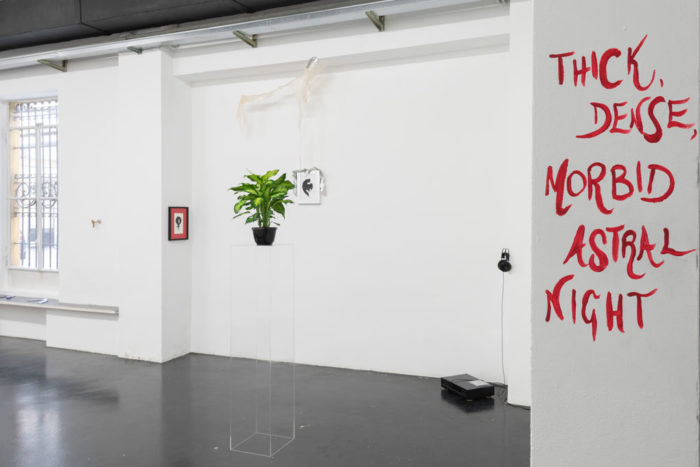
Savage at Otto Zoo, Installation View. Courtesy Otto Zoo. Matilde Cerruti Quara, Parole a muro (settembre 19), 2019. Photo Luca Vianello.
I might just misinterpret the difference and jump to the wrong conclusion, but I suspect that this choice of words reflects how the English translator, even unconsciously, saw a hierarchy between different kinds of “outside”: the “savage,” for the so-called “primitive” and “neurotic” people, and the “wild,” for those practitioners outside the rules of proper psychoanalysis, but still inside the “civilized” world.
Freud’s Euro-centric assimilation between “savages” and “neurotics” is aligned with the practice of de-humanizing otherness, which had been performed by European anthropologists, physicians, and philosophers long before the Viennese doctor. Centuries of colonial exploitation, extermination and slavery, but also the establishment of mental asylums for the socially unfits, were supported by the assumption that those who live outside the dictated rules should not be considered as a human subject. According to this view, “savages” remained in a state of a-linguistic disorder regulated only by the rule of nature, far away from (Western) civilization. Choosing “savage” as the title of my exhibition and of this text is an attempt to rescue this word from the hands of Freud and all the men that have used it in a similar way, filling it with sexual pleasure. I wish to use the word “savage” as an antidote against the domination of language to think about the topic of self-sex, so often related to the messy, savage “outside”. In my opinion, the multifold relationship between language and masturbation is an example of the ways in which the “outside” of language is then appropriated, shaped and regulated by language, used as a tool of supremacy.
Probably Sigmund would have called the author of Onania “wild.” Onania, whose first edition is dated 1715, was for centuries the most famous pamphlet dealing with the danger of Onanism within a pseudo-medical frame. Even if Onania was widely distributed, including the official scientific milieu of the XVIII and XIX centuries, the anonymous author was called a “quack” [1]. Onania was often used to promote the selling of medical remedies for this “abominable practice.” The pseudo-scientific discussion was enriched by descriptions of empirical cases narrated with the use of an emphatic vocabulary. The pervasive rhetorical tone of the book shows the influence of language on the perception of the human body, promoting a transformation of it according to moral and cultural paradigms.
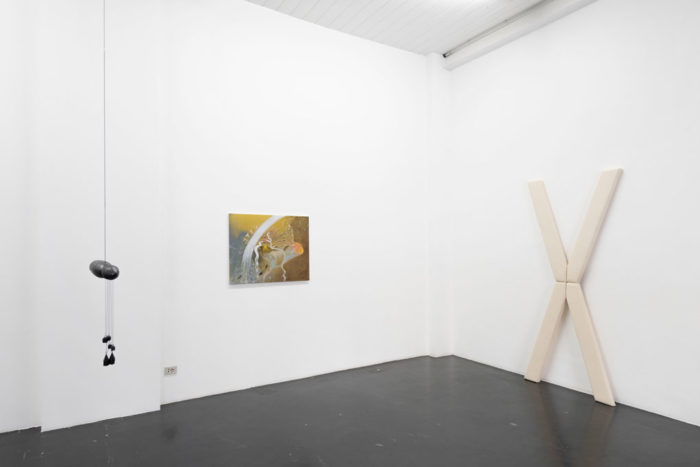
Savage at Otto Zoo, Installation view. Courtesy Otto Zoo. Photo Luca Vianello.
With Onania we also witness a revolutionary step in the field, as the subtitle of the book shows that nobody was spared from the spreading of this behaviour: “the Heinous Sin of Self Pollution, and all its Frightful Consequences, in both Sexes.” Historically, this was not the only innovation introduced by the book. The success of Onania was partially due to the lack of medical knowledge on this subject matter at the time. Before Onania, this “messy” act was lacking a proper jargon, in this case a scientific one. So, one might argue that all this “mess” was waiting to be regulated by words and the combination of moral and religious precepts within a scientific paradigm—even if it wasn’t a proper one—gave a lot of credit to the book.
A few years later in 1760, the Calvinist Protestant doctor Samuel-August Tissot, who practiced in the Swiss city of Lausanne and was also professor and Vatican adviser, released an updated theory based on his anonymous predecessor. Tissot was a kind of celebrity in the medical field and his books were translated in several languages, spreading the fear of diseases connected to self-induced sexual practices. Again words had a strong influence on bodies. With Tissot, the Onanist act begins to be officially addressed as a “disorder,” in a pathological sense. Tissot’s books established standards for what can be considered a sexually healthy body and individuated self-induced practices as a deviation from the norm. The doctor started to be interested in the topic early in his early career, and the more he was gaining credit as a successful physician the more his books became best sellers.
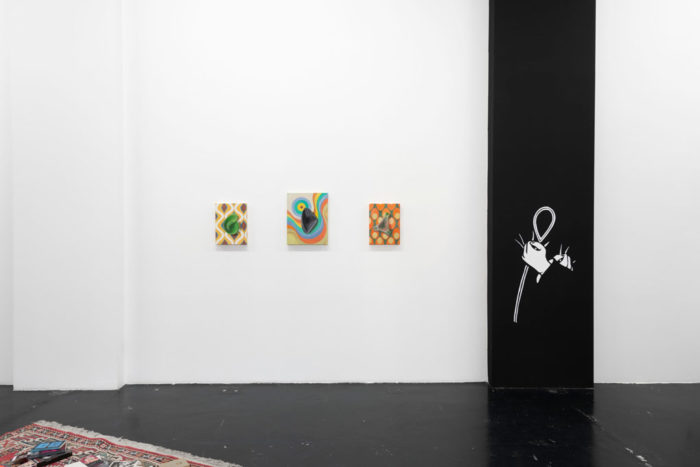
Savage at Otto Zoo, Installation view. Courtesy Otto Zoo. Photo Luca Vianello.
Although these publications are nothing more than collections of personal anecdotes, his fame alone justified the absence of specific medical observation, validation or proof. Differently from Onania, this time the words had an author who was a successful and respectable man, a healthcare professional with power, money and scientific fluency. The case of Tissot is a perfect example to show how words are not just simple combinations of letters. The word “authority” comes from “author,” namely a person who invents or triggers something, or even better who acts. Tissot was both author and authority. His name and references are even credited in the Encyclopédie of 1775. Alphabetically ordered as a dictionary, the Encyclopédie has an entry titled Manstupration or Manustupration. [2] The article describes the meaning of the term as an act of rape or contamination by hand.
However, this seemingly literal definition is not undisputed. In the 1970s, some Italian dictionaries [3] reopened a debate around the etymology of this term, establishing that originally the term “manu” (hand) was combined with “turbare,” which in Latin means “to shake/to create disorder” without any negative connotation. With the transition from Latin to Italian the word “turbare” acquired a judgmental tone, denoting the perturbation of a system, namely the passing from a balanced state to an unbalanced and gloomy one. For this reason, I can easily understand how the word “masturbation” became tinged with moral and social implications, hinting at rape and self-contamination.
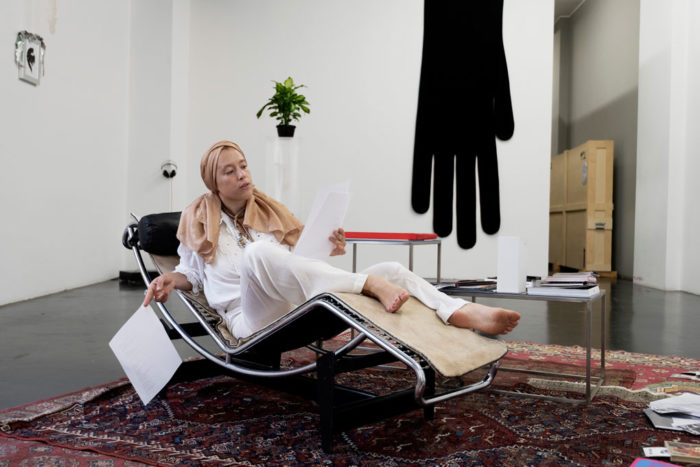
Savage at Otto Zoo, Installation view. Courtesy Otto Zoo. Photo Luca Vianello.
Another case connecting the universe of words (or rather no-words or wrong words) with the practice of “self-disordering” is Le Livre Sans Title, 1830. This time, not only there is no author, but there is not even a name for the book itself. The author defined himself as a “prison administrator” and he reported the description of the fatal effect of masturbation inside a dungeon. The book describes how masturbation could cause fever, stomachache, vomit, eye inflammation, alopecia, insomnia, nightmares, rigidity of the body, bleeding, pustules and tooth decay. These were the symptoms of a self-induced disease that would have led to the end of life. The unnamed author narrates the path to death using the tone of a horror story rather than the register of scientific reports. However, considering the articulated descriptions of clinical cases, it is likely that the author named as self-contamination through masturbation what actually was a contamination of syphilis through sexual intercourse among men. This apparent mistake seems quite deliberate to me though. By blaming masturbation, guardians could preserve the integrity of their authority, avoiding rumors (which could have also involved them) of man-to-man sexual practices inside their prison.
I go back to Google. If I digit “Onanism” I get pictures of old books, if I digit “masturbation” I get a list of porn-sites mostly designated for men. But if I digit “self-pleasure” I get articles and tutorials mostly written by women for women, explaining how to get the best from body stimulation. As noted before, even if Onania mentioned both sexes, the female body was less subjected to observation in the general discussion around this “disordered” act. I don’t think this was necessarily connected to the difference between male and female body. Normally historical and scientific texts, dictionaries and Encyclopaedias were written by male figures. One might say that they were unconsciously following Wittgenstein’s aphorism: “whereof one cannot speak, thereof one must be silent” [4]. Or that maybe they couldn’t explore a topic so “savage” to them; or even more likely they didn’t want to confer any “authority” to this aspect. In fact without naming the “problem” there is no “problem” at all.
Within European societies, and as a consequence within the male-dominated world of science, women have been regarded as a-linguistic, messy “savages” in need of regulation and control. Since the female body and the female context have been excluded from the dominant model of history, medicine is full of omissions, approximations, gaps and discriminatory categorizations. The observation of self-sex in women was therefore not an exception.
With a pseudo-scientific approach taken directly from Tissot, in the 1771 volume De la nyphomanie, the French physician J.D.T de Bienville attempts to draw a scenario of deviancy for female sexuality. Within this scope, he seemed to reach the same conclusion of his predecessor, stating that self-sex could only produce harm to women. The treaty was conceived as a counterpart to Tissot’s books, showing that the male body kept being the main point of reference for this investigation. Furthermore, J.D.T de Bienville aimed to systematize and pathologize instances of perceived “excessive-sexuality” in women. Connecting female masturbation with an “excessive desire”, the male author relied on some archaic and rather unscientific notions such as “furor uterinus” and “insane love” perpetuating the definition of self-sex as a pathological “disorder.”
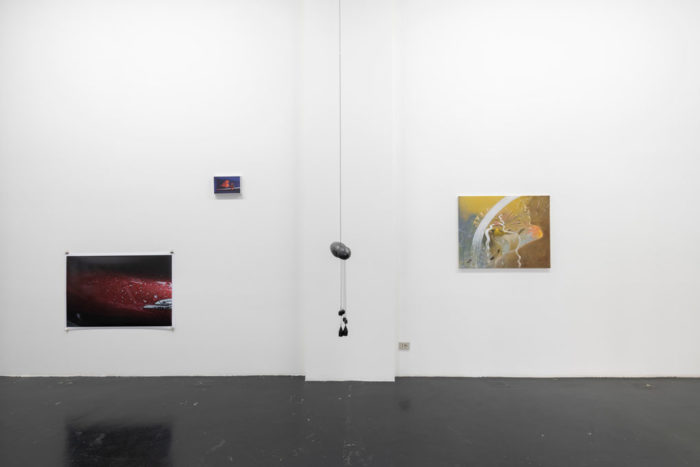
Savage at Otto Zoo, installation view. Sara Scanderebech, SH300i, 2019. Ping Pong Stories, 2018. Marco Giordano, Sbaaam Sbammm, 2019. Jacopo Pagin, È qui la tua Anima, 2019. Courtesy Otto Zoo. Photo Luca Vianello.
So how and when had the word “disorder” been transformed into pleasure?
“She Bop!”—Cindy Lauper would have replied this way [5].
Many revolutions have occurred in between Bienville’s “furor uterinus” and the Google pages on “self-pleasure.” I am obviously thinking about the sexual revolution of the 1960s and 1970s but, most importantly, about the feminist revolutions that in waves have unsettled centuries of linguistic dispossession. Quoting Cindy Lauper in this text is also a glimpse of how after words and texts, media and entertainment (such as cinema, TV, popular music, the Internet etc..) have revolutionized and influenced our relation to sex (and self-sex). If we stick to words and to my attitude towards order and disorder, we can define a revolution as the disordering of the order in force. Following the previously mentioned debate promoted by Italian linguistics, I intend a revolution as a “turbare l’ordine” (shake of the order) or even better a “stuprare l’ordine” (a rape the order). A revolution implies the “shaking” of the order and the consequent replacing of another order. It is a linguistic-human condition: we can’t “face” disorder [6]. The limits of our language doesn’t allow us to describe the in-between, we don’t have words for it and we are compelled to pass from a state of order to another. For this reason, after a revolution there is the necessity to re-write dictionaries and Encyclopedias. Google and Wikipedia are just an extension of this constant (re)arrangement operated through words.
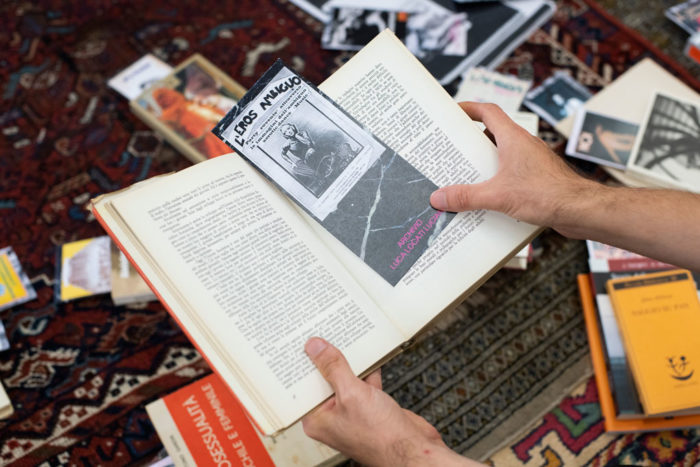
Savage at Otto Zoo, Installation view. Courtesy Otto Zoo. Photo Luca Vianello.
Around the same years that Italian linguists were reassessing the etymology of the term “masturbation,” in the Encyclopaedia Britannica of 1974 it is pointed out how many specialists of sexual behaviour glorify the benefits of masturbation for it produces pleasure and relaxes the body. Two years later, in 1976, in her book The Hite Report on Female Sexuality, Shere Hite based her investigation on letters written by 3000 American women. Hite methodologically ordered the “disorder” of female masturbation. She classified the women’s letters according to different observations coming directly from those who experienced the act. Throughout the book, Hite’s presence disappears leaving space to diverse and personal voices. More editor than author, Hite grouped “Six basic types of masturbation” as a sort of new taxonomy reclaiming the right for female self-pleasure.
The social impact and the burning desire generated by Hite’s work was immense, leading to the definition of the book as “a sexual revolution in 600 hundred pages”. One can say it was a sort of manifesto, as manifestos are written revolutionary tools. In 2000, Paul B. Preciado wrote Countersexual Manifesto establishing new theories and rules to step out from the binary categorization of “female” and “male.” By abandoning a language that acts through an identification and a classification “naturally” based by genitals, Preciado offers a new contract to new humans, who are able to consider desire and pleasure through the total body. Even the expression “self-pleasure” sounds obsolete in this new construction, where the authority of the penis is not substituted by the apparently more inclusive term “genitals,” but is replaced with something external from the human body: the dildo. “The dildo, as a reference of power and sexual arousal, betrays the anatomical organ by moving into other signifying spaces (organic and inorganic, male and female) that are re-sexualized by dint of their semantic proximity. From that moment on, anything can become a dildo. All is dildo. Even the penis.”
Preciado’s words seem to come from a future where the current words have actually been dismantled and a new language can really be acted out. Now, in November 2019, I compare my teen room with my current “pleasure room.” Everything has changed. There are no posters on the wall, although I feel quite comfortable with the anxiety produced by the walls’ white color. I still leave socks on the floor, their shapeless presence makes me feel as if I was here the day before. Books, as tools of order and reassurance, react to their function by being a dispersed multitude on different surfaces. It is quite dark, but my laptop vibrantly lights my face up, promiscuously close to my body.
On urbandictionary.com I discover a lengthy list of words I don’t know:
- masturbashame
- masturbasian
- masturbasible
- masturbasics
- masturbass
- masturbaste
- masturbastical
- Masturbasting
- Masturbat
- Masturbatabase
- masturbatable
- masturbatabolism
- Masturbatastic
- masturbatastrophe
- masturbatathon
- masturbate
- masturbateable
- masturbateathon
- masturbated and came
- Masturbatee’
- masturbate (female)
- Masturbatel Porn
- Masturbate (male)
- masturbaters
- Masturbaterade
- masturbaterial
- Mastur-bate Room
- masturbate sandwich
- masturbates furiously
- masturbate text
[1] “Ignorant Empirick”: according to the research of Stengers and Van Neck the author of Onania was defined a quack in several publications including Onanism displayed, London, 1719; Philo-Castitatis, Onania examined and detected, London, 1723.
[2] Encyclopedia, or a Systematic Dictionary of the Sciences, Arts, and Crafts) was published in France between 1751 and 1772. Many writers, known as the Encyclopédistes contributed in the project under the editing by Denis Diderot and Jean le Rond d’Alembert. The article on Manstrupation was written by Ménuret de Chambaud.
[3] In the Vocabolario Etimologico della Lingua Italiana, Ottorino Pianigiani confirms hand+rape, instead the Devoto-Oli dictionary puts the word in connection with the latin ‘turbare’ (shaking).
[4] These words compose the ending chapter of the Tractatus Logico-Philosophicus, (1921) by Ludwig Wittgenstein.
[5] Cindy Lauper ‘s song was released on 1984 and included in a list by the Parents Music Resource Centre because supposedly dealing with the subject matter of female masturbation.
[6] I would like to put the emphasis that “to face” is such a bodily and human expression.
The author would like to thank Sara Giannini, Adrienne Drake and Giulia Crispiani for the English supervision on the text.





